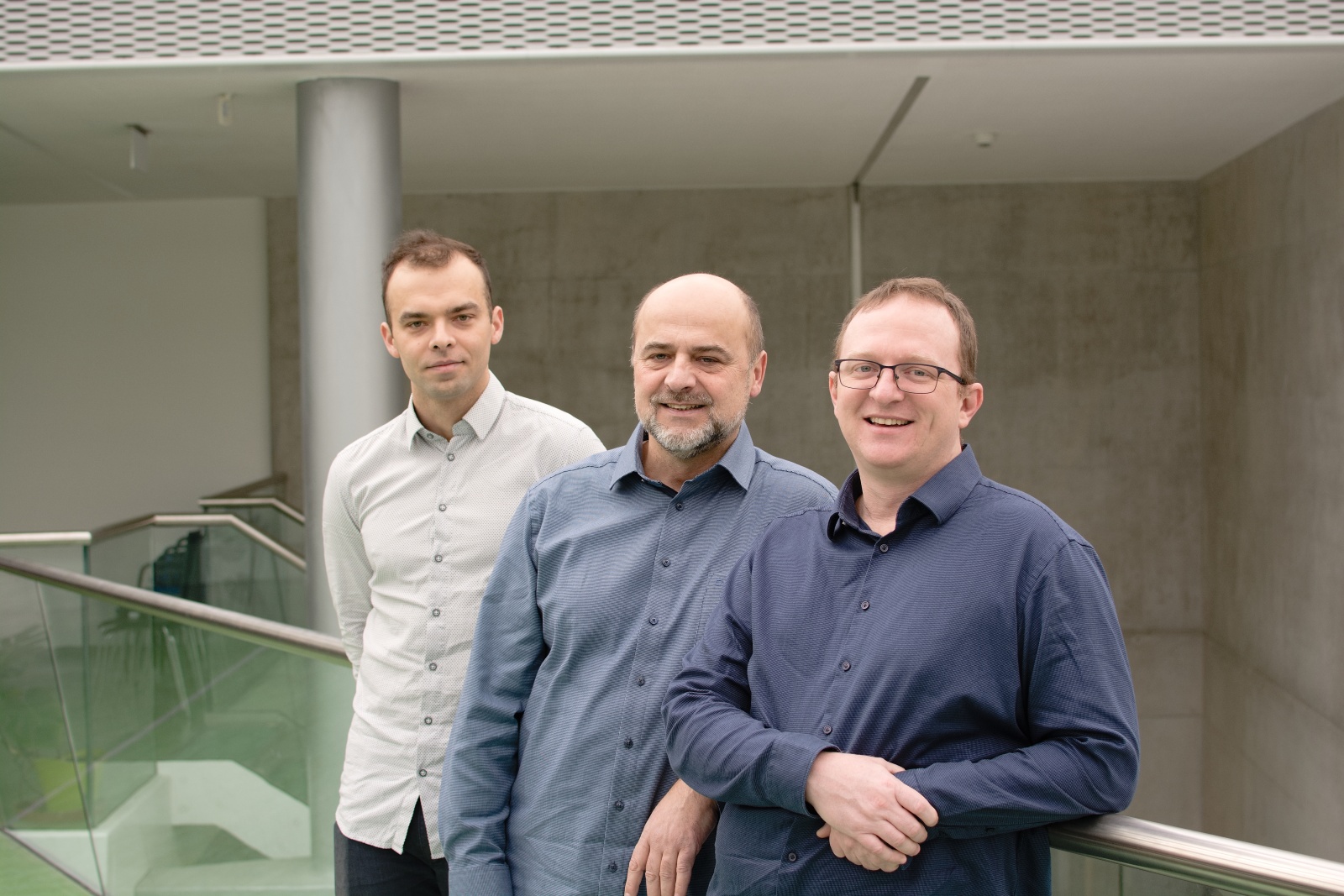Petr Fajkus and Vratislav Peška described the intricate evolution of telomerase RNA in insects and challenged the current state of knowledge about the evolution of TRs in animals
Telomerase RNA, abbreviated TR, is a special type of RNA (ribonucleic acid) that aids the formation and maintenance of protective caps at the ends of chromosomes called telomeres. The research team led by Jiří Fajkus from CEITEC Masaryk University (MU), in collaboration with scientists from the Institute of Biophysics of the Czech Academy of Sciences (CAS), discovered that telomerase RNA in insects from the order of Hymenoptera (which includes, for example, bees or bumblebees) differs from TRs found in other animals. And what is even more surprising, it is more similar to telomerase RNA found in plants and some unicellular organisms. This result suggests that during the evolution of arthropods, the ancestral TR may have been lost and replaced by the type of telomerase RNA that occurs in plants. The fascinating results of the research team from CEITEC MU have recently been published in the peer-reviewed journal Nucleic Acids Research by Oxford Academic.

Telomerase is essential for the long-term survival of cells and organisms. In humans, for example, its activity has been linked to cellular immortality, ageing and cancer. However, knowledge of the function of telomerase regulation is limited to model organisms in which the composition of telomerase is known. This hinders a more general understanding and does not provide a sufficiently representative overview of the telomere maintenance strategies that occur in nature. In their research, Petr Fajkus, Vratislav Peška, Jiří Fajkus and their collaborators have focused on finding the components of telomerase in insects, where this knowledge was so far lacking.
"Humankind is highly dependent on insects, mainly due to their enormous contribution to plant reproduction, and thus to crop production and ecosystem stability. About 75% of plants depend on pollinators for their reproduction. The need for pollinators for crop production alone has tripled in the last 50 years. At the same time, there are alarming reports of declining or even extinct insect populations in some regions. The newly acquired knowledge could allow us to study pollinators from the point of view of telomerase as one of the factors determining the long-term viability of their populations," explains Jiří Fajkus.
The previously known TRs in animals and fungi are transcribed from their genes by an enzyme called RNA polymerase II, while the TRs of plants and a number of unicellular organisms, also recently described by the team of Jiří Fajkus, are formed by a different enzyme called RNA polymerase III. In the latest study, initiated by Petr Fajkus and Vratislav Peška, the researchers looked at TRs found in a large group of insects, including bees and bumblebees. "It was a big surprise to us that the TRs in these insects differ from what we expected based on the evolutionary history of insects and within the animal kingdom. But rather than resembling TRs found in other animals, the TRs of insects of the orders Hymenoptera (e.g., bees, bumblebees and ants), and Lepidoptera (butterflies and moths) were surprisingly similar to those found in plants and some unicellular organisms. Our result suggests that at some point in the evolutionary history of these insects, their TRs changed from 'animal' to 'plant' TRs," says the first author of the study Petr Fajkus.
"The newly described insect TRs show us that the evolution of TRs has been much more intricate than previously thought. Thus, if the origin of TRs in animals was common at all, then the evolution of arthropods (where insect belongs) saw a major evolutionary change in the type and biogenesis of TRs. Interestingly, insect TRs are of a similar type to those of plants, for which many insect representatives serve as pollinators essential for their reproduction. However, we do not know the scientific rationale yet," explains Jiří Fajkus. This surprising discovery by Czech scientists from CEITEC Masaryk University challenges the current state of knowledge about the evolution of TRs of all animals.
This research was carried out within the EXPRO project funded by the Grant Agency of the Czech Republic, which brings together scientists from two Brno research institutions - Masaryk University (CEITEC MU and Faculty of Science MU) and the Institute of Biophysics of the CAS. In specific parts of the project, the team collaborated with researchers from three other institutions - the Boyce Thompson Institute (Cornell University), the Institute of Entomology of the CAS and the company Agricultural Research, Ltd.


 Share
Share
